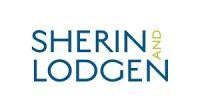Background
On Monday, June 15, 2020, the Federal Reserve opened the Main Street Lending Program (the “MSLP”), which is designed to increase access to capital for small and medium sized businesses.
Established by the Federal Reserve under the CARES Act in April and May, the MSLP comprises three loan facilities: the Main Street New Loan Facility (the “New Loan Facility” or “NLF”); the Main Street Expanded Loan Facility (the “Expanded Loan Facility” or “ELF”); and the Main Street Priority Loan Facility (the “Priority Loan Facility” or “PLF”). Under the MSLP, the Federal Reserve lends to a single Special Purpose Vehicle (the “SPV”) which will then use those funds to purchase participations in eligible loans from eligible lenders.
On June 8, 2020, the Federal Reserve Board modified a significant number of key terms of the MSLP in order to allow more businesses to take advantage of the program. And also on June 15, 2020, the Federal Reserve Board also published draft term sheets for the expansion of the MSLP to nonprofit organizations.
The changes published by the Federal Reserve in the last week merit a new discussion of the program in its entirety. What follows is a synopsis of the MSLP, as expanded on June 8, 2020 and a brief discussion of the nonprofit proposal.
For-Profit Borrowers
The MSLP applies the same criteria to lenders and borrowers across each of the New Loan Facility, Expanded Loan Facility, and Priority Loan Facility. Loans made under each facility provides many of the same terms: interest rate, maturity date, two-year deferral of principal, one-year deferral of interest, no prepayment penalty, and the amount of the loan that must be retained by lenders.
The differences between the three loan facilities relate chiefly to the maximum amounts that can be borrowed and restrictions on repayment of a borrower’s other debts. Additionally, while the New Loan Facility and the Priority Loan Facility will finance loans that were originated on or after April 24, 2020, the Expanded Loan Facility will finance additional credit added to loans on or after April 24, 2020, provided that the underlying loan had already been in existence before April 24, 2020. Because borrowers may only participate in one of the facilities, it is important to note the differences and similarities in each. The chart below may help.
Eligible Borrowers:
A borrower under any of the three facilities must meet the following minimum eligibility requirements:
-
Be established prior to March 13, 2020;
-
Be an eligible business under the Small Business Act (“SBA”);
-
Has 15,000 or fewer employees or annual revenues of $5 Billion or less;
-
Is a US business with significant operations and a majority of its employees based in the United States; and
-
Has not received specific support pursuant to Title IV of the CARES Act (i.e., air travel, air cargo carriers, and businesses critical to national security).
Participation in the Paycheck Protection Program (“PPP”), a separate program under the CARES Act, does not render a borrower ineligible for the MSLP.
Although nonprofit businesses are eligible for small business administration loans (like the PPP) under the CARES Act, nonprofit businesses are not currently eligible to borrow under the MSLP. A discussion of the proposed expansion of the MSLP to nonprofit businesses is below.
Note that the requirement listed above constitute the minimum eligibility criteria. Lenders are expected to conduct basic underwriting analysis, including an evaluation of Borrowers’ financial health, prior to approving a loan. Borrowers must certify that they have a reasonable basis to believe that, as of the date of origination of the loan, and after giving effect to the loan, it has the ability to meet its financial obligations for at least the next 90 days and does not expect to file for bankruptcy during that period. Borrowers must also comply with applicable restrictions in the CARES Act on buying back company stock (except as required by pre-existing contracts), paying dividends and making other capital contributions, as well as limitations on executive compensation.
In calculating a Borrower’s employee count, the program looks to the average total number of employees for each pay period during the 12 months prior to loan origination, including any part-time, seasonal, or otherwise employed persons, excluding volunteers and independent contractors. Borrowers should count their own employees and those employed by their affiliates. In calculating annual revenue, a Borrower may choose either (a) its (and its affiliates’) annual “revenue” reported on its 2019 audited financial statements pursuant to GAAP; or (b) its (and its affiliates’) annual receipts for the fiscal year 2019 reported on its 2019 federal tax return.
The MSLP uses the same SBA affiliation rules as the PPP, and affiliation may be determined based on (a) common ownership; (b) stock options, convertible securities and agreements to merge; (c) common management; (d) common identity of interest (including common investments and economic dependence); or (e) franchise agreements. Note however, that unlike under the PPP, the hospitality industry is not exempted from the SBA’s affiliation rules under the MSLP.
Terms of the Loans:
The Federal Reserve’s term sheets for the three loan facilities are summarized in the chart below, and are also available in the links just below:
|
|
Main Street New Loan Facility |
Main Street Priority Loan Facility |
Main Street Expanded Loan Facility |
|---|---|---|---|
|
Term |
5 years (previously 4 years) |
||
|
Minimum Loan Size |
$250,000 (previously $500,000) |
$10,000,000 |
|
|
Maximum Loan Size |
The lesser of: (previously $25 M) |
The lesser of: (previously $25M) |
The lesser of: (previously $200M, and included and existing debt qualifier) |
|
Participation Amount by Retained Lender |
5% |
5% (previously 15%) |
5% |
|
Principal Repayment |
Years 1 and 2: 100% principal deferred (previously principal was deferred for 1 year, and payments in years 2 – 4 were 33.33% each) |
Years 1 and 2: 100% principal deferred (previously principal was deferred for 1 year, and payments in years 2 – 4 were 15%, 15%, and 70%) |
|
|
Interest Payments |
Deferred for 1 year (previously both principal and interest were deferred for 1 year; principal is now deferred for 2 years; interest deferral remains capped at 1 year) |
||
|
Interest Rate |
LIBOR (1 or 3 month) + 3% |
||
|
Loan Security |
Secured or Unsecured |
Secured or Unsecured |
|
|
Priority |
At origination and as long as a NLF loan is outstanding, it cannot be contractually subordinated to any of Borrower’s other loans. |
At origination and as long as the PLF loan is outstanding, it must be senior to or pari passu with all other debt of Borrower (other than mortgage debt). Borrowers with existing debt (other than mortgage debt) will be required to make such existing debt subordinate to or on equal footing with the PLF loan. It is unclear in the regulations whether subsequent mortgages may also take priority over a PLF loan similar to existing mortgages. |
At upsizing and as long as the ELF upsized tranche is outstanding, it must be senior to or pari passu with all other debt of Borrower (other than mortgage debt). Borrowers with existing debt (other than mortgage debt) will be required to make such existing debt subordinate to or on equal footing with the ELF upsized tranche. As with the PLF, the priority treatment of subsequent mortgages is unclear. |
|
Fees |
Transaction Fee: Lender will pay the SPV 100 basis points of the principal amount of the loan (which the lender may pass through to the Borrower). Origination Fee: Borrower will pay the lender up to 100 basis points of the principal amount of the loan. |
Transaction Fee: Lender will pay the SPV 75 basis points of the principal amount of the upsized tranche (which the lender may pass through to the Borrower). Origination Fee: Borrower will pay the lender up to 75 basis points of the principal amount of the upsized tranche. |
|
|
Restrictions on Repayment of Other Debt |
Borrower must refrain from using loan proceeds to repay any other of Borrower’s existing loans, unless a payment is mandatory and due |
Borrower must refrain from using proceeds of eligible loans to repay any other loans, unless a payment is mandatory and due, but may, at the time of origination, refinance existing debt owed to another lender (i.e. not the lender making the Preferred Loan Facility loan). |
Borrower must refrain from using loan proceeds to repay any other of Borrower’s existing loans, unless a payment is mandatory and due |
|
Restrictions on Existing Lines of Credit |
Borrower must commit not to seek to cancel or reduce any committed lines of credit. |
||
Additional Considerations for the Expanded Loan Facility:
The ELF is intended to serve borrowers with existing, often larger or more complex, loans. Existing lenders may increase the credit extended to Eligible Borrowers by adding a new ‘upsized’ tranche to an existing loan. The loan being upsized must have been originated prior to April 24, 2020 by an Eligible Lender or Lenders to an Eligible Borrower, and must be held, at least in part, by an Eligible Lender, with a remaining maturity of at least 18 months. Existing loans that do not have an “opening” or “accordion” clause must be amended to comply with ELF requirements.
Applying:
Borrowers who wish to apply for a MSLP loan must apply through local lenders. Lenders are not required to participate in the MSLP, and borrowers do not need to be existing customers of lenders in order to borrow from them under the MSLP.
Eligible lenders are required to be U.S. federally insured depository institutions (including banks, savings associations, and credit unions), U.S. branches or agencies of foreign banks, U.S. bank holding companies, U.S. savings and loan holding companies, U.S. intermediate holding companies of foreign banking organizations, and U.S. subsidiaries of any of the foregoing.
As noted above, lenders will evaluate Borrowers’ financial health prior to approving a loan.
Items to Consider:
The MSLP loan amounts and rates are significantly less favorable than those offered by the PPP and the Economic Injury Disaster Loan (“EIDL”) programs. And, unlike the PPP, they cannot be forgiven. However, loans made under the EIDL program or the MSLP may be more useful to borrowers facing dire straits, because they can be used more freely than PPP loans (for instance, that 75% of the proceeds of which must be used on payroll costs). Additionally, careful consideration is needed to determine which MSLP loan facility is best suited for the Borrower. Finally, while the nonprofit segment of the MSLP is still in draft proposal stage, it does not appear that the $75 Billion announced invested in the SPV will be increased to include additional nonprofit loans to be purchased, and funding may become limited.
Nonprofit Borrowers
Because certain metrics required by the MSLP for calculation of loan amounts and creditworthiness may not apply to nonprofit organizations, the Federal Reserve has proposed the creation of two facilities specifically designed for nonprofit organizations. These programs are still in their proposal phases, with drafts having been posted on June 15 for public review and comment.
The Nonprofit Organization New Loan Facility (the “NONLF”) and the Nonprofit Organization Expanded Loan Facility (the “NOELF”) as proposed will similarly to the three for-profit MSLP facilities discussed 00976333.2 above. The NONLF is largely a nonprofit analog to the for-profit NLF and the NOELF is similarly a nonprofit analog to the for-profit ELF.
Eligible Borrowers:
A borrower under the NONLF or the NOELF must be a nonprofit organization, tax exempt under either 501(c)(3) or 591(c)(19) of the Internal Revenue Code, and must meet the following minimum eligibility requirements:
-
Be established prior to, and in continuous operation since, January 1, 2015;
-
Has either 15,000 or fewer employees, or 2019 annual revenues of $5 billion or less;
-
Has at least 50 employees and an endowment of less than $3 billion;
-
Has 2019 revenues from donations that are less than 30% of total 2019 revenues;
-
Have a ratio of adjusted 2019 EBIDA to unrestricted 2019 operating revenue, greater than or equal to 5%;
-
Have a ratio (expressed as a number of days) of (i) liquid assets at the time of the origination of the loan or upsized tranche to (ii) average daily expenses over the previous year, equal to or greater than 90 days;
-
Have, at the time of the origination of the loan or upsized tranche, a ratio of (i) unrestricted cash and investments to (ii) existing outstanding and undrawn available debt, plus the amount of any loan under the Facility, plus the amount of any CMS Accelerated and Advance Payments, that is greater than 65%;
-
Be a US business with significant operations in and a majority of its employees based in the United States;
-
Have not also participated in the NONLF, the MSNLF, the MSPLF, the MSELF, the Primary Market Corporate Credit Facility, or the Municipal Liquidity Facility; and
-
Have not received specific support pursuant to Title IV of the CARES Act (i.e., air travel, air cargo carriers, and businesses critical to national security).
Just as under the MSLP, Borrowers must certify that they have a reasonable basis to believe that, as of the date of origination of the loan, and after giving effect to the loan, it has the ability to meet its financial obligations for at least the next 90 days and does not expect to file for bankruptcy during that period. Borrowers must also comply with applicable restrictions in the CARES Act on compensation, stock repurchase, and capital contributions.
Terms of the Loans
The Federal Reserve’s term sheets for the NONLF and the NOELF facilities are summarized in the chart below, and are also available in the links just below: Nonprofit Organization New Loan Facility Nonprofit Organization Expanded Loan Facility
Nonprofit Organization New Loan Facility |
Nonprofit Organization Expanded Loan Facility |
||
|---|---|---|---|
|
Term |
5 years |
||
|
Minimum Loan Size |
$250,000 |
$10 million |
|
|
Maximum Loan Size |
The lesser of $35M or the borrower’s average 2019 quarterly revenue. |
The lesser of $300M or the borrower’s average 2019 quarterly revenue. |
|
|
Endowment Cap |
$3 billion |
||
|
Year in Operation |
At least 5 years |
||
|
Employee Min/Max |
Greater than 50; Fewer than 15,000 |
||
|
Revenue cap and source requirements |
2019 revenues of $5 Billion or less, with less than 30% sourced from donations. |
||
|
Participation Amount Retained by Lender |
5% |
||
|
Principal Repayment |
Years 1 and 2: 100% principal deferred Year 3: 15% Year 4: 15% Year 5: 70% (unpaid interest is capitalized) |
||
|
Interest Payments |
Deferred for 1 year |
||
|
Interest Rate |
LIBOR (1 or 3 month) + 3% |
||
|
Fees |
Transaction Fee: Lender will pay the SPV 100 basis points of the principal amount of the loan (which the lender may pass through to the Borrower). Origination Fee: Borrower will pay the lender up to 100 basis points of the principal amount of the loan. |
Transaction Fee: Lender will pay the SPV 75 basis points of the principal amount of the upsized tranche (which the lender may pass through to the Borrower). Origination Fee: Borrower will pay the lender up to 75 basis points of the principal amount of the upsized tranche. |
|
|
Restriction on Repayment of Other Debt |
Borrower must refrain from using loan proceeds to repay any other of Borrower’s existing loans, unless a payment is mandatory and due |
||
|
Restrictions on Existing Lines of Credit |
Borrower must commit not to seek to cancel or reduce any committed lines of credit. |
||
|
Prepayment Penalty? |
None |
|
|
|
Employee Retention |
While the loan (or upsized tranche) is outstanding, Borrower should make commercially reasonable efforts to maintain payroll and retain its employees, in light of its capacities, the economic environment, its available resources, and the business need for labor. Borrowers that have already laid-off or furloughed workers as a result of the disruptions from COVID-19 are still eligible to apply for Main Street loans. |
||
Next Steps:
These facilities are not operational at this time, as the Federal Reserve is currently soliciting comment on these facilities. Potentially eligible borrowers should study the loans carefully, and may wish to examine the for-profit rules for possible guidance. Those wishing to make comment are invited to do so to the Federal Reserve.
Conclusion
Now that the for-profit MSLP is currently running, we expect that clarifications and further regulations will be forthcoming from the Federal Reserve. Additionally, there will be additional guidance from the Federal Reserve as the NONLF and NOELF proposals are finalized and implemented.
1 According to the Federal Reserve’s Main Street Lending Program Frequently Asked Questions (“FAQs”), existing outstanding and undrawn available debt includes “all amounts borrowed under any loan facility, including unsecured or secured loans from any bank, non-bank financial institution, or private lender, as well as any publicly issued bonds or private placement facilities” and “all unused commitments under any loan facility, excluding (1) any undrawn commitment that serves as a backup line for commercial paper issuance, (2) any undrawn commitment that is used to finance receivables (including seasonal financing of inventory), (3) any undrawn commitment that cannot be drawn without additional collateral, (4) any undrawn commitment that is no longer available due to change in circumstance. Existing outstanding and undrawn available debt should be calculated as of the date of the loan application.” See G-2 of the updated FAQs: https://www.bostonfed.org/mslp-faqs




 i
i

